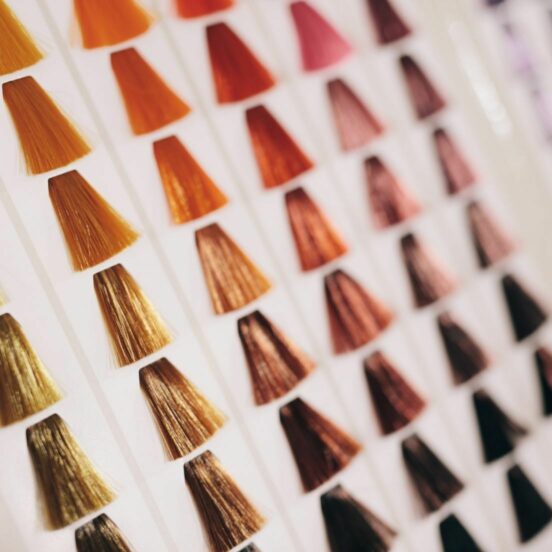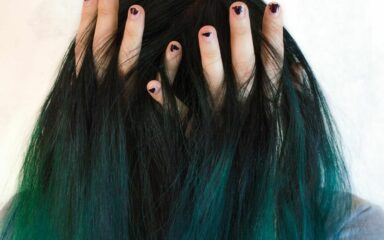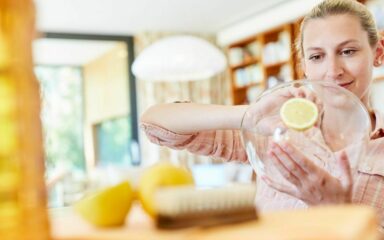Have you ever wondered why your hairdresser consistently achieves precisely the right hair color you asked for when all the hair swatches and samples on dye boxes are just not it? You want the lightness of a particular swatch, but you would love it to be more golden and less red. How to accomplish that? The secret hairdressing trick to perfect hair color is not so secret, and it's called hair color mixing.
Why Mix Hair Colors?
Hairdressers will rarely apply a single color to your hair. They will use a blend of different hair dyes to achieve the perfect color with the right lightness and undertones the client asked for. And you can do the same at home to reach a much richer and more nuanced result than just grabbing a box dye and applying it to your hair.
When you master the art of hair color mixing, you will be able to create a custom hair color that has the perfect lightness, hue, and vibrancy. Your hair will never look flat again because you choose a too ashy toner. You will be able to compensate for hair that pulls naturally warmer by adding warmth-canceling dye to your blend. And you will never find yourself choosing between two shades of hair dye when neither is the right one.
Can You Mix Any Two Shades of Hair Color?
You can technically mix any shades of hair color (and you aren't limited to two either). However, you may not want to mix some colors as the result won't be pleasant. Remember when you were a child and mixed paint colors into a muddy, dirty brown? The same can happen if you don't know the rules of hair color mixing and follow them.
Hair Color Mixing Rules
Hair color mixing is all about pigments and follows the same rules as any other color-related exercise. You will need to look at the color wheel and understand warm and cool colors. You will also need to do maths to calculate the right amount of developer to use with your new hair dye mix to keep the proper proportions.
Rule 1: Choose a Primary Color That Is Close To The One You Want
The easiest way to work towards your perfect hair color mixing result is to choose a base color similar to what you want. Then you can use the other color to adapt and change the primary color to get the perfect result. Look at it as adjusting your hair dye color, not changing it to something else. Adding a secondary color to your primary color will allow you to:
- Change the darkness or lightness by mixing it with a darker or lighter tone in the same warmth and vibrancy levels.
- Make your hair color mix cooler by adding ash or beige hair dye
- Make your hair color mix warmer by adding golden, red, chocolate, or copper tones
- Hair color mixing a natural-toned dye so the end color is more neutral and less vibrant
If you want to change the primary hair color, you can mix it with about 25% of the secondary color. If you want a more significant change, you can combine them 50/50. If you aren't sure how it will look, strand test first to ensure the result is as expected.
Rule 2: Keep The Proportions Between Dye And Developer Right
Usually, hair dye is mixed with developer 50/50, but it depends on the dye brand and what results you want to achieve. This means that you need to add as much developer as the total amount of hair color mix, even if you used two types of hair color. You can read our frequently asked questions about hair developer to learn more about this. Still, the easiest way to achieve the right developer mix is to combine the dyes, then calculate how much peroxide against the total amount of hair dye.
Always mix your hair dye and developer using a brush on plastic containers. Metal containers can react with the chemicals in the dye and change the end color or produce unexpected results. For once, plastic is best! A good hairdressing brush will allow you to evenly mix the dyes and developer and create a homogeneous mixture, which will give you even results.
Rule 3: Avoid Mixing Two Different Brands Of Hair Dye
Different brands of hair dye have different technologies and usage specifications. Mixing them can lead to unexpected results, and when dying your hair, the last thing you want is unexpected results. I'd go even further and avoid mixing a hair developer designed for a particular hair dye line with a different hair dye. The additives can cause havoc on the pigments if they haven't been formulated to work together.
The most straightforward hair color mixing is using dyes from the same brand and range, as this way, you know they are 100% compatible. Also, avoid mixing dyes with different textures: a gel with a cream or a cream with a liquid hair dye. They will be challenging to blend into a homogenous mixture, but the colors can change as the pigments interact. Some very experienced hairdressing professionals experiment with this, but you shouldn't take the risk if you are dying your own head and not a disposable wig.
Rule 4: To Cover Gray Hair, You Will Need To Play With The Undertones
Gray hair is often the most challenging hair to dye. They are more coarse than regular hair, and despite being lighter in color, they are difficult to cover unless you choose the right color and type of hair dye. Tone-on-tone and semi-permanent dyes often won't stick to grey hair, and at most, you may get a highlighted finish where the grey hairs are still a lot lighter than the rest of your hair tinted a different color.
If using permanent color, a darker dye can be mixed with a light golden color to blend in the greys and last for about 4 or 5 weeks. If you want to camouflage grey hair while keeping to your original hair color, always choose a hair dye that is a bit lighter than your hair to avoid ending up with a darker tone overall.
Rule 5: If In Doubt, Do A Strand Test
If you don't know the result of hair color mixing, the best way to test is by doing a strand test. Cut a strand of your hair from the nape of your neck (so it's not visible) and prepare a small amount of dye and developer mixture in the same proportion you want to test. Please apply to the strand and see how it develops and whether you like the end color before using it all over your head.
How to Choose Colors to Mix Together?
To choose the right colors for hair color mixing, you want to look at the detail of the hair color codes of the dyes you are looking at.
The Shade of Hair Dye Color
The shade of hair dye is the primary base color for that dye. For example, Chocolate brown, ash brown, Light Blonde. It defines the level of the hair color, and you should choose your primary hair color by mixing dye based on this. This is the number before the dot on numerical hair color codes.
Hair tones
Hair tones or reflects are the secondary hues that give hair color nuance and prevent it from looking flat. When you look at the hair color codes, the reflects are the numbers that come after the dot on most hair dye ranges. The first number is the primary reflect; the second number is the secondary reflect.
So, for example, 7.46 means:
- A medium blonde level 7 base
- A primary copper reflect
- A secondary red reflect
So this would be a warm blonde with strong coppery red tones.
The different reflects are:
- Ash Cool, greenish and smokey
- Beige Cool but creamy and muted
- Violet Cool and pinky or red, often used for burgundy dyes
- Gold Warm with bronzed, golden reflects
- Copper Warm and orange, often used in chestnut and auburn dyes
- Mahogany/Plum Neutral, slightly blue for deep reds
- Red Warm and bright for vibrant red tones
When choosing colors for hair color mixing, you want to make sure the reflects don't neutralize each other. If you mix the ash with copper, you will have neutral, muddy tones. It would be best to choose tones that complement each other, such as adding red tones to make a copper dye deeper and more vibrant or using beige to cool down the gold-toned dye.
If the secondary shade is lighter, it will lighten up the result. If the secondary shade is darker, it will darken it up, which is excellent if you want a slightly darker color (just mix 1/4 of darker pigment with 3/4 of the primary lighter ones).
What Hair Color Can You Mix? Examples of Classic Hair Color Mixing Formulas
The following are tried and tested hair color mix formulas, but you should experiment with the brand of dye you prefer to use. Some dye brands run warmer or cooler than others, so the result is never the same across different product types.
Light Brown and Ash Blonde Hair Color Mix
Mixed at 50/50, you will achieve a cool light brown (or dark blonde) with ashy reflect tones.
Golden Blonde and Intense Copper Blonde Hair Color Mix
Mixed 3/4 and 1/4, you will achieve a bright golden blonde with auburn tones.
Light Blonde and Light Ash Blonde Hair Color Mix
Mix 3/4 to 1/4 for a toned ash blonde that is not too cool but cancels brassiness.
Chocolate Brown and Light Brown Hair Color Mix
Mixed 1/2 and 1/2, this hair color mix will give you a very natural-looking brown hair that is not too warm and not too cool but still a bit warmer than neutral.
What Happens If You Mix Red and Blonde Hair Dye?
Mixing red and blonde hair dye results in a warm blonde that could be called strawberry blonde or light orange. It depends on the proportions used and the base hair color.
What Happens If You Mix Pink and Blue Hair Dye?
If you are after a pastel purple color, pink and blue demi-permanent dyes can be mixed for an unusual but beautiful wash of color. Dilute with conditioner and apply to already very blonde hair for a pastel result.
What Happens If You Mix Black and Red Hair Dye?
Black hair dye tends to take over and has a solid blue undertone, so mixing it with red dye is not good. At worst, you will have cool brown hair or a dark purplish-brown. However, if you choose a lighter brown (a level 4, for example) and mix it with red pigments, you can get a dark red hair dye.
What Hair Dyes Should I Use?
Mixing box dye can be a bit more challenging and require more trial and error than using products designed to be used at a hairdressing salon. Box dye usually has different behavior and incorporates more layers of pigments and a higher strength developer, so people don't get a flat result at home. Mixing two box dyes from different manufacturers will likely end in a color correction disaster, so stick to the same brand and range for safer results.
If you can, purchase salon hair dyes, which are more specific regarding the shade range and actual reflects. And always write down the formula you are using, so you can replicate it in the future.
Mixing Darker Colours
When attempting hair color mixing to achieve a dark hair color, make sure you choose a base color that is a bit lighter than the exact shade you are after. Most hair dyes, even professional ones, run dark, and if there is an excess pigment deposit, you can end up with a darker than expected result.
Remember that ashier and cooler colors will always look darker once in the hair, so adjust accordingly.
Creating Subtle Colours Or Color Corrections
If you want to adjust hair dye to achieve a subtler, natural color, you want to neutralize some of the reflectors of the primary dye; to do that, you mix with 25% of the secondary dye, which should have opposing reflectors on the color wheel. For example, you could use violet to cancel excessive gold tones. Opposite colors have a neutralizing effect, but it's very challenging to get it right without strand tests.
Hair color mixing is an art, but it's also the best way to achieve your ideal hair color at home. It's a professional hairdressing technique that requires some practice and a bit of experimenting, but the results are worth it. Creating your custom hair color gives you the ultimate freedom to achieve the hair color of your dreams without having to go to the salon.



